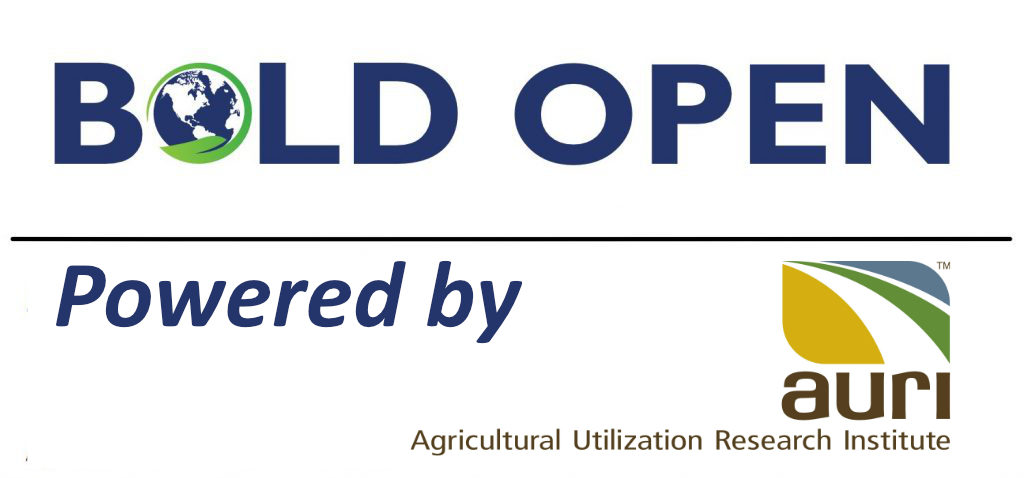End Uses for Recycled Flexible Plastic Packaging
Company Background
MBOLD is a coalition of Minnesota’s globally leading businesses, researchers, and other stakeholders working together to accelerate solutions to the most pressing challenges facing the food and agriculture sectors. Our founding members include General Mills, Target, Schwan’s Company, Land O’Lakes, Cargill, Ecolab and the University of Minnesota among others. Our focus is on accelerating solutions to climate change and other natural resource challenges and the need to sustainably feed 10 billion by the year 2050. One pillar of our work is reducing the environmental impact of packaging commonly used to package food.
Open Innovation Challenge
MBOLD recognizes that the development of end-markets for products made from recycled resin using flexible plastic films is key to a more circular approach to the management of flexible films. To that end, we are seeking:
- End-use applications for the recycled resin made from flexible films
- Partners in the recycling, re-processing and manufacturing sectors in reasonable proximity to Minnesota to jointly explore market-based collaborations aimed at fostering a more circular economy for flexible films.
Reason for Seeking External Innovation Partnership
MBOLD’s packaging team is exploring avenues to catalyze the recycling of flexible films in and around Minnesota. The “Materials Recovery for the Future” (MRFF) initiative in Pennsylvania has demonstrated the feasibility of collecting and sorting flexible films / flexible packaging gathered through curbside recycling, but flagged insufficient end-markets for recycled resin as a critical barrier. MBOLD companies themselves could also potentially be a source of flexible film waste including pallet wrap, store drop-off single use shopping bags and various other streams of flexible film waste. Farms in our region also commonly have spent flexible films that they need to dispose of (e.g. plastic wrap for silage, bags from agricultural products, irrigation drip tape, etc.)
The use of flexible plastic packaging, a broad category including plastic pouches, wraps, and bags, is expanding rapidly. Plastic film and flexible packaging in North America are projected to grow 3% annually with current US demand at approximately 12 billion pounds (valued at $24-25 billion) per year. This packaging material is designed to deliver food safely, with high quality, and efficiently. From a life cycle analysis, it is almost always the best choice. Flexible films are also used in many other aspects of the food and agricultural system including pallet wrap and various agricultural plastics, among others. However, only 4% of this material is recycled, with nearly all of it ending up in landfills at end of life.
Scope of Solution Space
An initial scan of potential end use applications has identified various construction applications, plastic pallets, trash bins and bags, packaging, furniture, office supplies, agricultural applications (such as silage bags, drip tape and pond liners), and gowns used as protective equipment in healthcare settings. We welcome insight on these types of applications as well as other applications that could have potential.
- End use applications for the resin resulting from recycled flexible films
- Ideal end use applications:
- Would be processed within the state of Minnesota or nearby
- Have the potential to use significant amounts of recycled resin to help drive demand
- Could utilize a theoretical resin composition as outlined below
- Have the potential to become financially sustainable business opportunities able to garner an unsubsidized positive ROI when using a recycled feedstock
- Ideal end use applications:
- Insight is also requested on the feasibility of proposed end use applications from technical and economic perspectives, needed volumes and specifications for recycled resin to be used, and supply chain relationships needed to profitably bring such products to market.
If instituted, curbside pick-up of flexible films could represent a “worst case” mixed materials stream. The “rFlex” bale developed through the MRFF initiative identified the following specification: (confirm this is public before AURI puts this on the BO website)
- At least 60% single resin polyethylene films and laminates
- Less than 18% multi-layer films and laminates with contamination levels of less than:
- 2% PET
- 1% metal
- 1% PVC
- 1% nylon
- Less than 7% single-resin polypropylene films and laminates
- Less than 15% paper/fiber
It is possible that flexible film sourced via MBOLD member operations would be of significantly higher purity (and predominantly polyethylene). Conversely, some agricultural plastics would likely involve significant chemical or other contaminants.
- Identification of potential collaborators and thought partners
- Solution providers or thought partners would:
- Have a new way to process film into plastic pellets that can be used to make packaging or durable goods and/or,
- Currently have or be willing to explore development of manufacturing capabilities to use recycled resin in the manufacture of other products and/or,
- Have insight on the above that could inform development of a more circular economy around flexible films in the region
- Solution providers or thought partners would:
Innovation Solutions Not of Interest
- Current processing capabilities or services unrelated to flexible film
- Recycling or end use processing that requires excessive transportation to / from the Midwest
- End use applications that do not drive significant utilization of recycled feedstock
- Waste to energy solutions
- The collection and sorting of material
- Consumer outreach or education
Proposal Response Date Deadline
August 28, 2020
Website Link
MBOLD Coalition: https://www.greatermsp.org/pages/mbold/
Bold Open – www.boldopenmn.com
Contact Information
AURI – boldopen@auri.org
At the MBOLD ™ coalition, we believe that the future of food and agriculture must be one that nourishes a growing global population while protecting and preserving the Earth’s natural resource base for the generations to come. Minnesota’s globally leading cluster of businesses, researchers, and food and agriculture producers has a vital role to play in making that future a reality. We work together to accelerate solutions to the most pressing challenges facing the food and agriculture sectors, particularly our changing climate and other natural resource challenges and the quest to meet the nutritional needs of a population expected to reach 10 billion by the year 2050.

